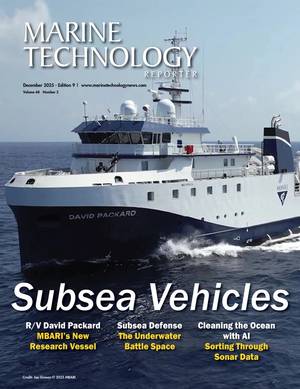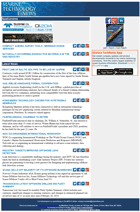In Memoriam: Captain Charles Robert MacVean, USN, (Ret.), PhD

Capt. Charlie MacVean with some of his USS SEAWOLF (SSN575) divers. (Photograph courtesy of John Freeman).
In Memoriam: Captain Charles Robert MacVean, USN, (Ret.), PhD
March 22, 1937 – September 10, 2025
The book, Blind Man’s Bluff, describes the secret USN submarine operations known as “The Projects.” It begins with the opening line, “There was something about Commander Charles R. MacVean that had a way of inspiring legend.” Authors Sontag and Drew narrowed that “something” down to “his sense of humor and humanity.” Even in the toughest of situations, MacVean radiated calm assurance and situational command. His sailors and divers would knowingly follow him past the Gates of Hell, and did more than once. They called him “Captain,” “Skipper,” “Mac,” or simply “Charlie.”
Captain “Charlie” MacVean passed away in the company of family in San Diego, CA, on September 10, 2025, at the age of 88. MacVean joins other stellar American submariners enshrined in history: Bushnell, Holland, Lake, Nimitz, Morton, O’Kane, Butler, and others.
Charles Robert MacVean was born in Paterson, New Jersey. Following graduation from high school in Ridgewood, New Jersey, he attended Dartmouth College as an NROTC student. He earned a Bachelor of Arts Degree, Summa Cum Laude and Phi Beta Kappa, majoring in Engineering Physics, and was commissioned in 1959. Ensign MacVean served as Communicator on board the USS FORREST SHERMAN (DD931) prior to
attending Cornell University where he received a PhD in Nuclear Science and Engineering. Lieutenant MacVean then entered the Nuclear Power and Submarine Curriculum, completing courses in Bainbridge, MD, Windsor Locks, CT, and New London, CT.
Lieutenant Commander MacVean was assigned to USS TINOSA (SSN606) in 1965 where he served as the Main Propulsion Assistant and Navigator.
The USS TINOSA keel was laid at Portsmouth Naval Yard 24 Nov 1959, the second in a series of fast attack submarines following USS THRESHER (SSN593) from PNY. Charlie recalled some parts of the propulsion system for the THRESHER were not available for its first voyages, so parts from TINOSA were substituted.
After THRESHER’s loss at sea with all hands on 10 April 1963, the now available THRESHER parts were built into TINOSA, with the serial numbers beginning with “593-”. MacVean silently kept the memory of those seamen as he worked every day.
Thresher’s loss was traced in part to its inability to blow its ballast tanks due to excessive moisture in the submarine's high-pressure air flasks. The moist air inside the flasks cools as it expands and flows through the valves. The cooling is localized at the point of expansion. The water vapor froze and plugged the flow paths. This was later confirmed in dockside tests on TINOSA where the flow of air lasted only a few seconds.
Following qualification as a Nuclear Propulsion Engineer, MacVean attended the SSBN Navigator course and completed four POLARIS Strategic Deterrent Patrols as Navigator of the USS GEORGE WASHINGTON (SSBN598 (Blue)), 1968-1972.
 Captain Charlie MacVean and wife, Ellen, at the NSLPACSW luncheon, February 2020.
Captain Charlie MacVean and wife, Ellen, at the NSLPACSW luncheon, February 2020.
From 1972 until 1975, Commander MacVean served as the Commissioning Executive Officer of the USS PARCHE (SSN683). PARCHE became the most highly decorated ship in U.S. Navy history, mainly for missions that remain classified to this day.He reported for duty as the Commanding Officer of USS SEAWOLF (SSN575) in 1975. During his three years in command, USS SEAWOLF conducted extensive classified operations in the Pacific.
MacVean had a close intellectual and personal relationship with Adm. Hyman G. Rickover, Father of the Nuclear Navy, which he recounted on occasion with stories, including a presentation for the Naval
Submarine League, “Admiral Rickover-Up Close and Personal.”
Once, while commanding a classified mission on SEAWOLF, a rack of electronics in a power panel failed spectacularly. To repair it, the submarine surfaced in a fog bank, spare parts were substituted and tested, the reactor restarted, and the ship submerged. USN protocol required SEAWOLF to return to port. MacVean, however, assembled his officers in the mess, discussed the matter, expressed his confidence in the repair and testing, and suggested they complete the mission. The officers unanimously agreed. The mission was completed, and they returned to port. On the return trip, he sent the message “Mission Completed.” And a second, “btw, we had a fire in the reactor compartment.” The Navy was not amused. On the brink of court martial, Rickover intervened, writing, “Leave SEAWOLF alone. They did exactly what we trained them to do.” MacVean reflected, “Rickover saved my career.”
In 1978, Captain MacVean assumed command of Submarine Development Group ONE. This Group contained seventeen ships and units and was the sole Navy activity responsible for deep ocean search, location and recovery. Captain MacVean retired from active Naval Service in October, 1981.
Captain MacVean’s awards include two Distinguished Service Medals, the highest award for non-combat service, requiring Presidential review and approval. He also received the Legion of Merit, the Joint Service Commendation Medal, and the Navy Commendation Medal.
MacVean always spoke of his wife, Ellen, with tremendous affection and admiration. They met as juniors in high school, and were married after his graduation from Dartmouth. When Charlie’s submarine, SEAWOLF, set a submerged record of 89-days, it was Ellen who looked after the wives and families at home, a U.S. Navy extended family, helping solve daily problems, occasionally handling far worse. One new mother lost her child just a day or two after giving birth. Ellen stepped in to help with arrangements and grief. She recalls, “I went to the naval hospital in Oakland to be with her. She was amazingly strong. She waited for her husband to come home to have a burial. It was one of the hardest days I had as the CO’s wife.” The word was passed to Charlie at sea, who broke the news to the young father under his command. Ellen added, “Because of how terribly the CO of the George Washington had handled telling Charlie his brother was killed in Viet Nam, he was very compassionate with informing a crew member of a tragedy at home.” His crew knew their captain’s personal interest in each of them, and he saw an inspiring example of dedication in them.
Following his Naval service, Dr. MacVean held numerous positions in industry, including Honeywell/Hydro Products, eventually becoming Vice President and General Manager. In 1989, Dr. MacVean became the Vice President for Business Development at Horizons Technology, a San Diego company developing and providing mission planning software for the U.S. Navy, U.S. Marine Corps, and overseas allies.
MacVean authored an engaging autobiography, “Down Deep,” with the help of friends John Freeman and Gresham Bayne, available on Amazon.
One SEAWOLF crewman wrote, “Great book. Felt like I was alongside the CO again. Nice feeling. I was a nuke, so there were long hours, and very tough times. Not always fun. But as was stated throughout the book, you always busted your ass. Not because you feared Mac, but because you never wanted to let the Old Man down. That’s a quality that a fine leader has. Mac had it in spades.”
MacVean is survived by his wife and two children, Amy Perez of La Habra Heights in Los Angeles County, CA and David MacVean of Southport, NC. A third child, Lynne MacVean, passed away in February 2025 in Newport Beach, CA.
A Memorial is planned for November 1, 2025, in Point Loma, CA. Ellen picked the date. “Charlie took command of SEAWOLF on November 1, 1975 so his memorial will be on the exact 50th anniversary. I think he would like the date we have chosen to honor and remember him.”
A Memorial page for Charlie may be found at here.
Your memories and photos of Charlie are welcome. In lieu of flowers, the family has provided links to two non-profits Charlie felt strongly about.
(In Memoriam by Kevin Hardy)













 December 2025
December 2025



